Related Research Articles

Josef Kammhuber was a career officer who served in the Imperial German Army, the Luftwaffe of Nazi Germany and the post-World War II German Air Force. During World War II, he was the first general of night fighters in the Luftwaffe.
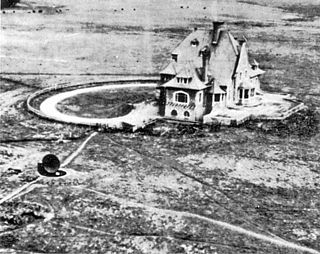
Operation Biting, also known as the Bruneval Raid, was a British Combined Operations raid on a German coastal radar installation at Bruneval in northern France, during the Second World War, on the night of 27–28 February 1942.

Freya was an early warning radar deployed by Germany during World War II; it was named after the Norse goddess Freyja. During the war, over a thousand stations were built. A naval version operating on a slightly different wavelength was also developed as the Seetakt.

No. 100 Group was a special duties group within RAF Bomber Command. The group was formed on 11 November 1943 to consolidate the increasingly complex business of electronic warfare and countermeasures in one organisation. The group was responsible for the development, operational trial and use of electronic warfare and countermeasures equipment. It was based at RAF stations in East Anglia, chiefly Norfolk.

The Kammhuber Line was the name given by the Allies to the German night-fighter air-defence system established in western Europe in July 1940 by Colonel Josef Kammhuber. It consisted of a series of control sectors equipped with radars and searchlights and an associated night fighter. Each sector would direct the night fighter into visual range to target intruding bombers.
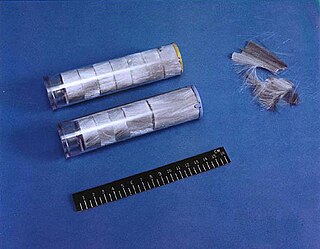
Chaff, originally called Window or Düppel, is a radar countermeasure involving the dispersal of thin strips of aluminium, metallized glass fiber, or plastic. Dispersed chaff produces a large radar cross section intended to blind or disrupt radar systems.

Heinrich Prinz zu Sayn-Wittgenstein-Sayn was a German night fighter pilot and flying ace during World War II. At the time of his death, Sayn-Wittgenstein was the highest-scoring night fighter pilot in the Luftwaffe and still the third highest by the end of World War II, with 83 aerial victories to his credit.
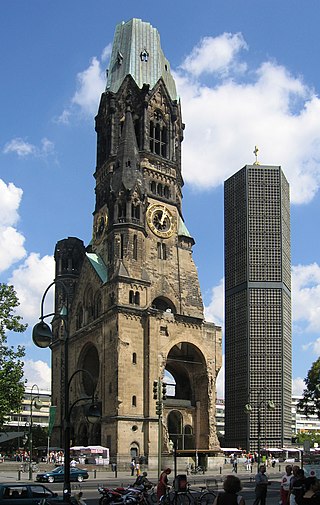
The Battle of Berlin was a bombing campaign against Berlin by RAF Bomber Command along with raids on other German cities to keep German defences dispersed. Air Chief Marshal Sir Arthur Harris, Air Officer Commanding-in-Chief (AOC-in-C) Bomber Command, believed that "We can wreck Berlin from end to end if the USAAF come in with us. It will cost us between 400 and 500 aircraft. It will cost Germany the war".
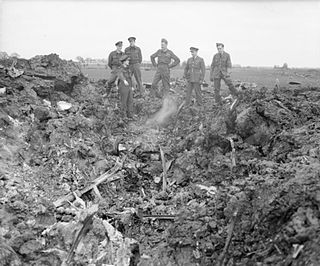
Operation Steinbock or Operation Capricorn, sometimes called the Baby Blitz or Little Blitz, was a strategic bombing campaign by the German Air Force during the Second World War. It targeted southern England and lasted from January to May 1944. Steinbock was the last strategic air offensive by the German bomber arm during the conflict.

The Defence of the Reich is the name given to the strategic defensive aerial campaign fought by the Luftwaffe of Nazi Germany over German-occupied Europe and Germany during World War II against the Allied strategic bombing campaign. Its aim was to prevent the destruction of German civilians, military and civil industries by the Western Allies. The day and night air battles over Germany during the war involved thousands of aircraft, units and aerial engagements to counter the Allies bombing campaigns. The campaign was one of the longest in the history of aerial warfare and with the Battle of the Atlantic and the Allied naval blockade of Germany was the longest of the war. The Luftwaffe fighter force defended the airspace of German-occupied Europe against attack, first by RAF Bomber Command and then against the RAF and United States Army Air Forces (USAAF) in the Combined Bomber Offensive.
Nachtjagdgeschwader 1 (NJG 1) was a German Luftwaffe night fighter-wing of World War II. NJG 1 was formed on 22 June 1940 and comprised four Gruppen (groups). NJG 1 was created as an air defence unit for the Defence of the Reich campaign; an aerial war waged by the Luftwaffe against the bombing of the German Reich by RAF Bomber Command and the United States Air Force. In 1941 airborne radar was introduced with radar operators, and standardised in 1942 and 1943. Consequently, a large number of German night fighter aces existed within NJG 1.
Nachtjagdgeschwader 2 was a German Luftwaffe night fighter and night intruder wing during World War II.
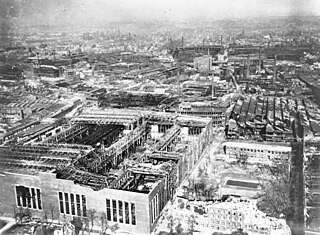
The Battle of the Ruhr was a strategic bombing campaign against the Ruhr Area in Nazi Germany carried out by RAF Bomber Command during the Second World War. The Ruhr was the main centre of German heavy industry with coke plants, steelworks, armaments factories and ten synthetic oil plants. The British attacked 26 targets identified in the Combined Bomber Offensive. Targets included the Krupp armament works (Essen), the Nordstern synthetic oil plant at Gelsenkirchen and the Rheinmetall–Borsig plant in Düsseldorf, which was evacuated during the battle. The battle included cities such as Cologne not in the Ruhr proper but which were in the larger Rhine-Ruhr region and considered part of the Ruhr industrial complex. Some targets were not sites of heavy industry but part of the production and movement of materiel.

The Dowding system was the world's first wide-area ground-controlled interception network, controlling the airspace across the United Kingdom from northern Scotland to the southern coast of England. It used a widespread dedicated land-line telephone network to rapidly collect information from Chain Home (CH) radar stations and the Royal Observer Corps (ROC) in order to build a single image of the entire UK airspace and then direct defensive interceptor aircraft and anti-aircraft artillery against enemy targets. The system was built by the Royal Air Force just before the start of World War II, and proved decisive in the Battle of Britain.
Leopold "Poldi" Fellerer was a Luftwaffe night fighter ace and recipient of the Knight's Cross of the Iron Cross during World War II. The Knight's Cross of the Iron Cross was awarded to recognise extreme battlefield bravery or successful military leadership.
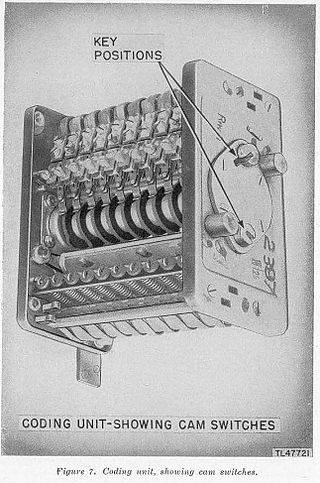
FuG 25a Erstling was an identification friend or foe (IFF) transponder installed in Luftwaffe aircraft starting in 1941 in order to allow German Freya radar stations to identify them as friendly. The system was also used as a navigation transponder as part of the EGON night bombing system during 1943 and 1944. It was the second German IFF system to be used, replacing the FuG 25 Zwilling.

Operation Gisela was the codename for a German military operation of the Second World War. Gisela was designed as an aerial intruder operation to support the German air defence system in its night battles with RAF Bomber Command during the Defence of the Reich campaign. It was the last big operation launched by the Luftwaffe Nachtjagdgeschwader during the conflict.

The Battle of Douvres Radar Station was a military engagement of the Invasion of Normandy, that took place on 17 June 1944. The radar had been destroyed on the first day and Allied troops had bypassed the site moving further inland.
German Luftwaffe and Kriegsmarine Radar Equipment during World War II, relied on an increasingly diverse array of communications, IFF and RDF equipment for its function. Most of this equipment received the generic prefix FuG, meaning "radio equipment". During the war, Germany renumbered their radars. From using the year of introduction as their number, they moved to a different numbering scheme.
References
- ↑ Pritchard, David (1989). The Radar War: Germany's Pioneering Achievement 1904-45. P. Stephens. p. 134. ISBN 978-1-85260-246-8.
- 1 2 Germany and the Second World War: Volume VII: The Strategic Air War in Europe and the War in the West and East Asia, 1943-1944/5. Clarendon Press. 1990. p. 253. ISBN 978-0-19-822889-9.
- ↑ Johnson, Brian (2004-06-30). The Secret War. Pen and Sword. p. 111. ISBN 978-1-84415-102-8.